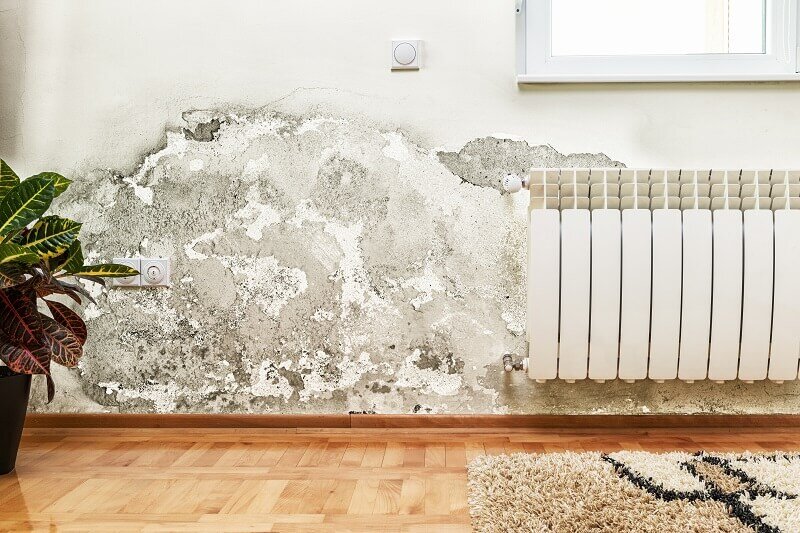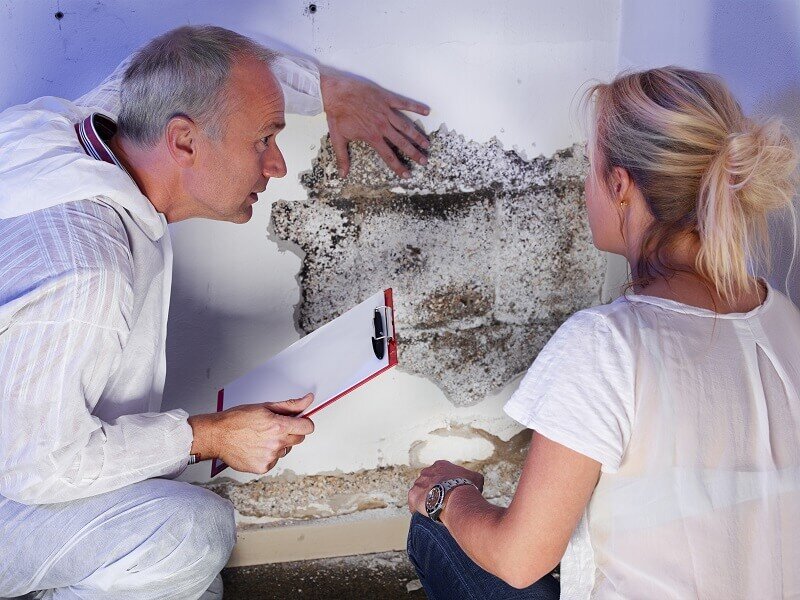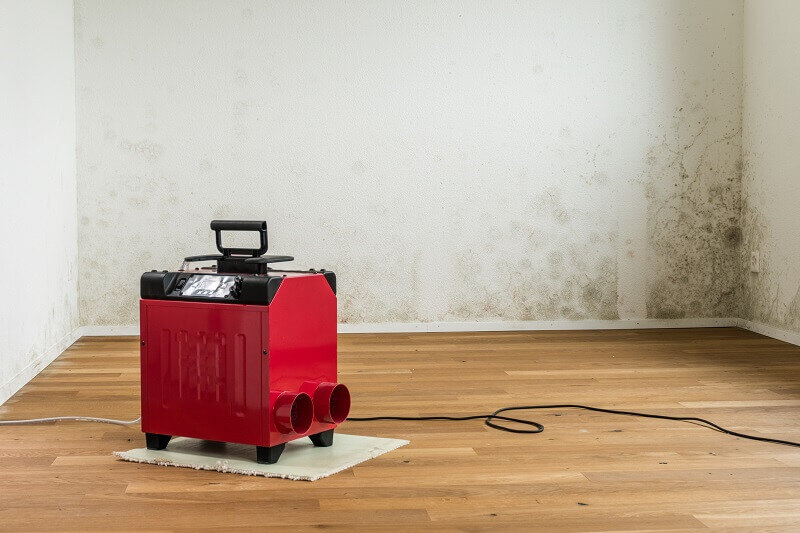
Selling a house with mold in Texas can be quite challenging, for homeowners. This guide aims to simplify the process. Mold problems, such as the existence of mold and various other types of mold can discourage buyers and affect the property’s market value. Yet armed with the knowledge and resources homeowners can confidently manage the sale of a property affected by mold. This article offers expert advice on how to disclose any mold issues and address affected areas. You can attract buyers—even if mold is present. Whether you’re facing mold growth in crawl spaces, attics or drywall these suggestions will assist you in transforming a challenge into a solution.
How to Sell a House With Mold in Texas
Finding mold in your home can be an ordeal, for any homeowner. However, by taking the steps and putting in some effort selling your house in Texas can still be a successful venture. This guide offers advice to help you navigate through this process smoothly.
- Full Disclosure is Key: As a homeowner, it’s important to disclose any known mold problems to buyers. Being upfront ensures compliance with Texas real estate regulations. Also helps build trust with interested parties. Your real estate agent can assist you with the disclosure documentation.
- Professional Mold Inspection and Remediation: If you come across mold in your property it’s advisable to engage the services of a mold remediation company. They will conduct an inspection and removal process to eliminate all traces of mold spores. This step is vital as it impacts the value of your home on the market.
- Prevent Recurrence: Following the mold remediation, take measures to prevent any recurrence. This could involve repairing water damage and installing devices like dehumidifiers in areas with high moisture levels such as attics and basements.
- Boosting Your Home’s Appeal: Despite dealing with mold issues it’s important to showcase the features of your home. Highlight its attributes, recent upgrades and prime location in Texas. This will draw in buyers with cash on hand who are open to addressing any lingering mold concerns.
- Consider an As-Is Sale: If the expenses associated with mold removal services are too high think about selling your property in its condition. This approach could catch the attention of cash buyers or real estate investors looking for properties below market value. However, make sure to disclose the presence of mold from the start to prevent any issues.
Keep in mind although dealing with mold damage may appear overwhelming it doesn’t have to be a deal breaker. By being transparent engaging remediation services and implementing a marketing approach you can confidently sell your mold-affected Texas home!

Identifying Mold Issues in Your House
Mold issues can show up in ways. Spotting them early can help lower health risks and stop further harm. Here’s how you can recognize mold problems at home:
- Visual Inspection: The obvious sign of mold trouble is when you see mold, which may appear as black, green, or white patches, on walls, ceilings or furniture. Especially in damp spots. Mold often lurks behind wallpapers, drywall, under carpets or within HVAC systems.
- Musty Odor: A lingering musty mildew scent strongly suggests mold growth even if you don’t see it. If certain parts of your house consistently smell damp or earthy it’s an idea to check for mold.
- Health Symptoms: Exposure to mold can lead to health problems like sneezing, coughing, skin rashes and eye irritation. If these symptoms persist when you’re home but ease up when you’re away it might point to a mold issue.
- Water Damage Signs: Water leaks, stains from water damage or a history of flooding could contribute to mold growth. Keep an eye out for discoloration peeling paint or warped walls and floors.
- High Humidity: Mold thrives in environments with high humidity levels. If your home regularly has high humidity levels, above 60%, it creates conditions for mold to grow.
Make sure to seek a mold inspection if you notice any of these signs. It’s crucial to assess the level of mold spread and the specific types involved which will help in carrying out an efficient mold removal procedure.
How to Find the Source of Mold in Your House
To locate where mold is coming from, in your house begin by finding areas with high moisture levels as these are spots for types of mold to grow. Common places for mold development include bathrooms, basements, attics and kitchens because they tend to have humidity levels.
Next, check for any signs of water damage. Damaged drywall peeling paint and water stains often indicate moisture issues that could be promoting mold growth. Focus on spots near windows, roofs, and plumbing fixtures where leaks are likely.
Don’t overlook your HVAC system. Inadequate ventilation can create an environment for mold to thrive. Make sure to inspect and clean your HVAC system to prevent mold from taking hold.
Lastly it’s worth considering hiring a mold inspector. These specialists possess the expertise and tools needed to pinpoint inaccessible sources of mold that homeowners might miss. They can perform inspections. Identify the specific type of mold present crucial information, for effective remediation efforts.
Remember that taking action is crucial. The sooner you detect and deal with the root cause of mold growth the harm it can do to both your home and well being.

Resolving the Mold Issue in Your House
Dealing with mold problems in your house can feel overwhelming. It is definitely doable to resolve the problem with the right approach. The first thing to do is to hire professionals who specialize in mold remediation. They have the knowledge and tools to safely get rid of mold from your home. Depending on how bad the problem is they might need to remove affected walls or floors clean the area with antimicrobial products and make sure everything is thoroughly dried out to prevent more mold from growing.
If you’re facing a small mold issue you might be tempted to clean it up yourself. Just remember to be careful. Don’t use bleach because it doesn’t work well against types of mold and can actually be harmful when mixed with mold. Make sure you wear masks and gloves for protection.
Don’t forget to address any sources of moisture in your home like fixing leaks improving ventilation or using dehumidifiers in areas. Remember, prevention is key! By getting rid of moisture sources you’re tackling the reason for mold growth head on.
Lastly make it a habit to regularly check your home for any signs of mold problems before they get out of hand. Keeping an eye on areas, to prevent mold growth can help you avoid expensive repairs and health issues in the future.
Transparency plays a role when selling a house with mold problems. In Texas, sellers are required by law to complete disclosure forms that detail any known defects or concerns about the property, including mold infestations. Prospective buyers have the right to conduct a mold inspection before finalizing the purchase. The presence of mold can impact the selling price. By disclosing it upfront and taking remedial actions you can still attract buyers and safeguard yourself from potential legal repercussions. Remember, a home without mold not only promotes better health but also enhances its appeal to potential buyers.
It’s important to consider that some buyers might be interested in buying the property in its condition mold included. They might present a cash offer that factors, in the cost of addressing the mold issue. This option could be appealing for sellers looking to avoid handling remediation tasks themselves.
Tips For Selling a House With Mold
Selling a house with mold may present challenges. It doesn’t have to be a deal breaker. While mold can unsettle home sellers with the approach you can still reach a deal, for your property. The key lies in addressing the mold problem in compliance with regulations to reassure buyers of the safety and value of the home. In the sections we’ll share tips and advice on navigating a home sale despite mold being present in your Texas property. Lets dispel misconceptions, about mold together and kickstart your journey to selling your home.
- Hire a Professional for Mold Inspection and Remediation: Dealing with mold issues is not an easy task, especially if you’re planning to sell your home. It’s crucial to engage certified mold inspectors to ensure the identification and treatment of any mold problems, including hidden ones that could surprise buyers.
- Provide Complete Mold Disclosure: When selling a house with mold concerns honesty is key. Disclose all known mold issues upfront to establish trust with buyers and protect yourself legally. Providing copies of mold inspection reports and details of remediation efforts can help buyers make decisions.
- Highlight the Remediation Efforts: Highlight the steps taken to address the mold problem, such as changes, repairs or preventive measures put in place to prevent growth. By showcasing these efforts you can demonstrate handling of the issue to reassure buyers.
- Price Appropriately: Due to the perceived desirability of homes with a history of mold it’s important to price your property properly. Work closely with your real estate agent to set a price that considers the cost of remediation and the overall condition of the property.
- Offer a Home Warranty: Consider offering a home warranty that includes coverage for mold-related problems to attract buyers. By providing this assurance you can give buyers peace of mind in case any mold issues arise.
- Extra Tip! Additionally you might want to explore selling your house to a “We buy houses in Fort Worth” company. These companies specialize in purchasing homes as ‘swhich means they’ll buy your property regardless of any mold concerns. This option can be convenient and stress free, for sellers who prefer not to handle the disclosure and remediation process themselves. An example of such a company is Southern Hills Home Buyers. They buy houses in any condition, including houses with mold. They are reputable home buyers in Houston, but also buy houses in Fort Worth and Arlington, Texas.
Conclusion
In summary, when it comes to selling a house in Texas with mold it doesn’t have to be a task. By being upfront, about the mold taking steps to address it pricing the house fairly and maybe even including a home warranty sellers can confidently attract buyers. Don’t let mold spores discourage you from selling your home! By following these tactics you can transform what seems like a challenge into a selling point that showcases your honesty and integrity.If time is of the essence and you’re looking to “sell your house fast in Arlington” consider reaching out to a company like Southern Hills Home Buyers that specializes in purchasing homes as is. They are familiar with the obstacles associated with selling a mold-infested property. Are prepared to provide you with a fair offer relieving you of the burden of dealing with mold removal and expensive repairs. Remember, having mold doesn’t automatically mean your home won’t sell. It’s all, about how you handle and present the situation.
